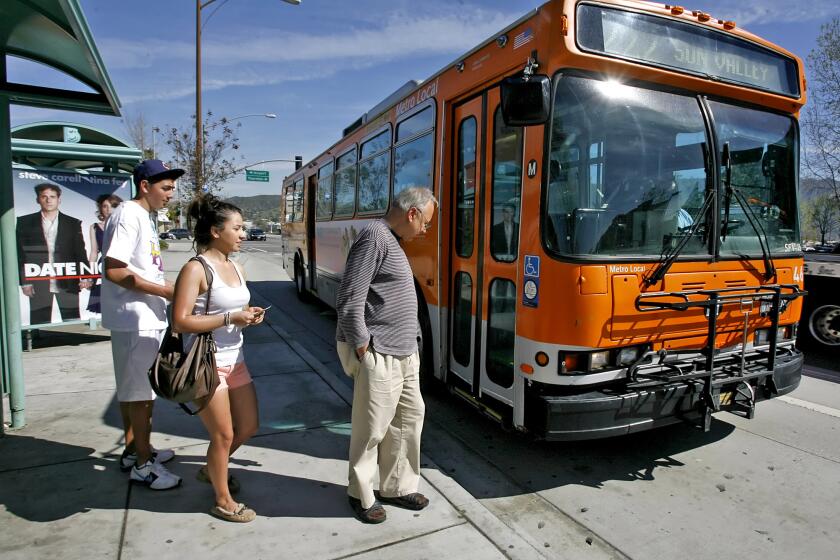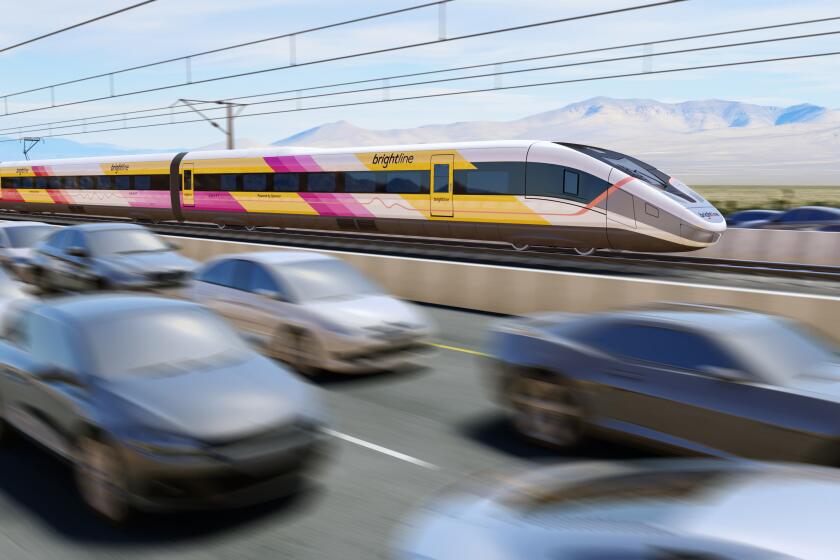Subsidize the Poor, Not the Well-Off : Mass transportation: An MTA budget crisis threatens to cut bus service urgently needed by lower-income urban users.
For all the talk about turning Los Angeles around, there is a real choice facing the region--a choice that measures whose L.A. we are talking about.
The Metropolitan Transit Authority had a hearing last week on the question of cutting costs of bus lines. A thousand people turned up at the raucous event, most members of groups representing the disestablished. The MTA board also heard from a coalition of 14 Latino elected officials and from urban planners who think the choices being made are just bad planning. The options before the board were cutting back on bus service, eliminating some routes, raising the fares in general or raising some of the special fares such as those for seniors, the handicapped or students.
There are budget shortfalls. There is the recession, the loss of reserves, declining bus ridership (now down to about 400 million, with a base fare of $1.10, from a peak of 497 million when subsidized fares cost 50 cents in 1985) and increasing regulatory costs. There are also other realities about those who ride the buses in Los Angeles: The median income of Metrolink riders is $63,300 a year; the median income of bus riders is between $10,000 and $15,000 a year. The current subsidy for Metrolink is $38 per ride; the current subsidy for the bus is $1.17 per ride. Metrolink riders have cars--which we want taken off the road; bus riders, for the most part, don’t have cars and have little to no alternatives in getting to work, to school or to church on Sunday.
Los Angeles planners have long been grappling with the problem of mass transportation. We are midway in the most expensive transit program in the country’s history, creating rail linkages across our vast, sprawling region. But we are not even midway in recognizing the fact that our inner cities are also part of Los Angeles, that peace and prosperity will not come until we do something about the poverty and isolation of those areas, and that cutting bus service may be exactly the wrong direction to go. In fact, it may be that the flexibility of bus service may serve us much better throughout the region than a fixed rail system ever could.
If the MTA, which is arguing that it has no other way to make up for an expected $125-million shortfall of the $700 million it needs to maintain existing services (while sustaining a $620-million annual administration budget) cannot find another alternative, cannot distribute its security forces more equitably between the trains and the buses, cannot increase and upgrade the number of buses or redirect them to better serve the poorer areas of the city, it will risk adding strongly to the impression that the city no longer cares about its poor.
If the MTA--admittedly in bad straits--cannot find another alternative, it will not be an idle bureaucratic decision, but one fraught with political ramifications. For all the attention paid to the enormous costs of the earthquake and fires and mudslides, for all of Mayor Riordan’s efforts to restructure the city’s finances by making it safe and business-friendly, there is a growing sense in the minority communities that this new Los Angeles will have nothing to do with them. It is time for the new Administration in City Hall to reach out to the population that probably didn’t vote for Richard Riordan. He needs to be their mayor as well, or he will not have much of a city to govern, no matter how many police he gets out on the streets. He can create links to these communities, but so far, even his links to the minority business community are weak. He could demonstrate active leadership at the MTA as an advocate for the inner city. He has the clout. He has to demonstrate that he has the heart for it.
More to Read
Start your day right
Sign up for Essential California for news, features and recommendations from the L.A. Times and beyond in your inbox six days a week.
You may occasionally receive promotional content from the Los Angeles Times.






